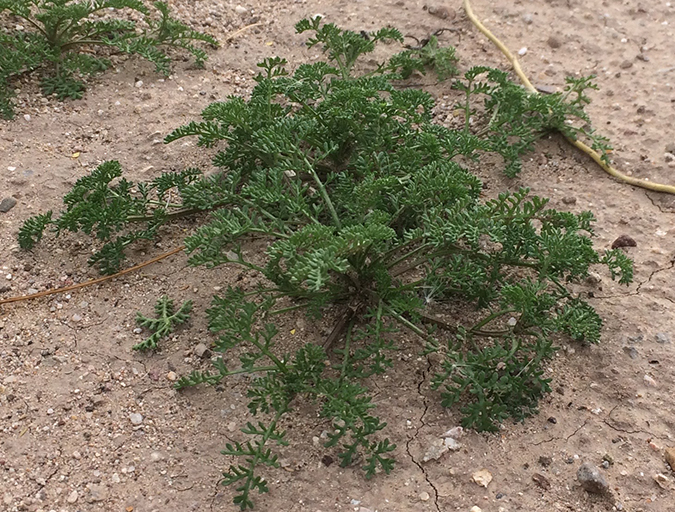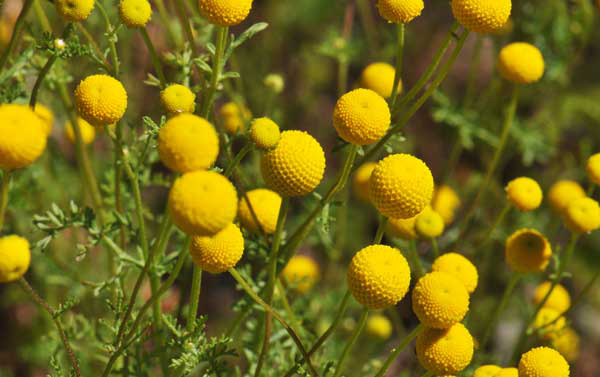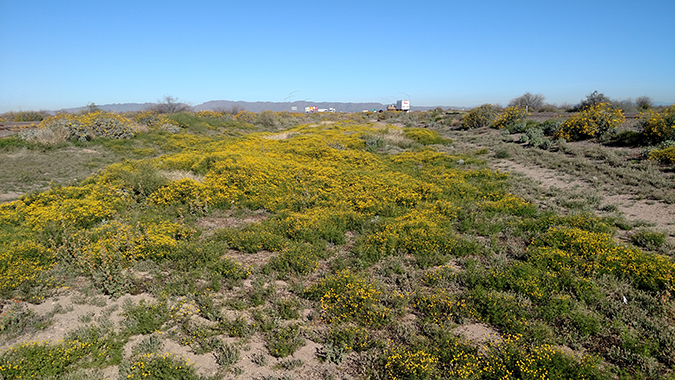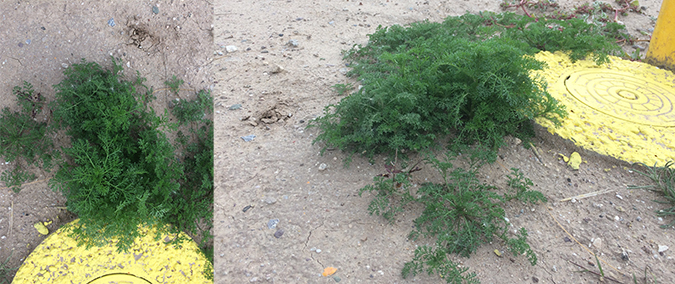

Stinknet is a noxious winter annual composite native to South Africa. Emergence starts in late November and plants can continue to germinate and emerge through the month of May in wet years. Leaves appear “carrot-like” dark green and twice dissected and have a strong odor. Flowering starts in late February and can continue through May. Flowers are bright yellow and ball shaped.


Stinknet growth can become explosive in years with a wet fall followed by a wet winter, as we had in 2016, 2018, again in 2019.
Plants grow in dense clusters and easily displace native vegetation. During growth the plants can cause severe allergic reactions, both dermal and respiratory. Infestations spread rapidly along roadways and open fields in residential areas, dried dense patches are highly flammable, and the smoke is caustic.


The continuous plant emergence over several months requires repeated manual removal. Stinknet can cause respiratory or skin allergic reactions. Be sure to use gloves and a facemask when hand pulling. If the stinknet population is allowed to spread for two years, manual removal becomes impossible. Hire a certified applicator to treat established infestations with herbicide.
Stinknet has heavily infested counties in California between Los Angeles and San Diego. In Arizona Maricopa county and parts of Pinal county. There are incipient infestations in Pima County around Ajo and Tucson.
The first records of stinknet in both California and Arizona date to the early 1980s and in Arizona the early 1990s. An incipient patch was first recorded in Tucson in 2015 on the northwest corner of Prince Rd and I-10. That site was the ADOT equipment yard for the 2012-2014 interstate widening project. In Arizona, stinknet explosively spread in Maricopa County during the wet fall-winter season of 2016, 2018, and 2019 with heavy infestations of the north fringes of Phoenix and Scottsdale, along with rapid movement southward along I-10 to Casa Grande.
Stinknet in Arizona
https://tucson.com/news/local/weed-warriors-face-foul-new-foe-from-phoenix/article_929104f5-e4d2-5b38-9b99-7b43545f94b8.html
Stinknet in Orange County CA described by the California Native Plant Society
https://www.occnps.org/PDF/HYS-Oncosiphon-piluliferum.pdf
Stinknet in the urban landscape (CA)
https://ucanr.edu/blogs/blogcore/postdetail.cfm?postnum=27920
Stinknet 2019 infestation in Phoenix
https://thefoothillsfocus.com/?p=3107
For more information and questions, contact the Arizona Native Plant Society Conservation Committee at: [email protected]
Oncosiphon piluliferum in Arizona. 2009. L. R. Landrum, L. Dugan. S. Whitcomb. Madroño 52(Oct 2005):270-271
https://www.researchgate.net/publication/232676346_Oncosiphon_piluliferum_in_Arizona
Prepared by John Scheuring, Conservation Director of the Arizona Native Plant Society